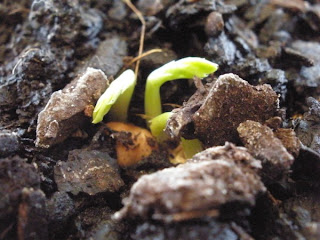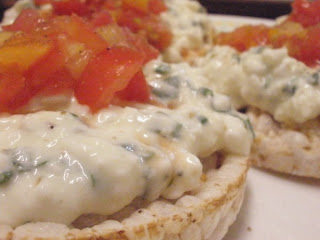I am descended from Irish stock (in part) and the Irish love spuds. Not those fake sweet potato things, I mean the real potatoes with the white flesh that make amazing crisps, delectable salads, scrumptious mash, divine wedges, fries, hashbrowns, cakes.... Ohmygosh, I'm drooling!
Uh huh, so I'm addicted to potatoes. If I were ever stranded on a desert island there better be a potato crop right nearby or things would get ugly.
Potatoes are not the only member of the nightshade family that I have an unabashed adoration of. Tomatoes are a potatoes' best friend. My backyard is filled with tomato plants. I'm giving tomatoes away because on an instinctual level I know that to eat too many of those delicious red and yellow delights will result in pain. I restrict myself to small portions, diced up small... well, mostly I do.
Also in the family are eggplants, peppers (capsicums to us Aussies), chilli and tobacco. Tobacco and I have never become friends. Chilli and I parted company some time ago thanks to the oral autoimmune condition that I have, but my love of peppers and eggplants remained. If necessary though, I could live without them... for a short time anyway.
In my quest for a peaceful painfree life, I read this article: Do Nightshades Promote Inflammation?
Okay, to backtrack a bit. Two years ago I had a series of blood tests run. One of the things that showed up was inflammation. When I experience fatigue and joint pain I now recognise it as an inflammatory response to something I've eaten or done. So, could my potato addiction be feeding my inflammation?
The author (Scott Kustes) of the article above talks of his joints popping.
When I first changed my eating habits for the better a few years back, I started incorporating lots of salads (still do, but that’s beside the point). One to two salads per day, each with tomatoes and green peppers. .... I was incorporating lots of nightshades into my diet. At that level of consumption, I started getting all kinds of popping in my joints, especially in my back and even in my sternum. It wasn’t painful, but that I could pop pretty much anything at will was disconcerting.
Yup! I can do the same. My sternum popped at work the other day and my colleague's eyes widened. 'I've never known anyone who could do that,' she said and we laughed about it. One elbow pops when I throw the ball to my dog. That's just started in the last few weeks. I can pop my lower back, my shoulders and my ankles. My wrist pops when I use the computer mouse to scroll in small increments across the screen. That's a relatively new one. Come to think of it, I've been wondering about this recent increase in popping. As Scott says, it's disconcerting.
Scott goes on to say:
Later, Dr. Smith started talking about nightshades on the CrossFit forum and I decided to try cutting back. I cut out the tomatoes and peppers from my salads and cut back on the hot sauce. Lo and behold, the popping in my back and sternum went away.He admits that after eating nightshades he experiences aches in a formerly dislocated shoulder joint. When he's nightshade free, exercises on the same joint are pain free.
The first joint to give me trouble is my knee. It's a sharp twinge/stabbing pain that doesn't stop me walking but generally precedes the burning/aching pain in the other big joints. It does feel like what I imagine arthritis would be, and I'm ready to accept that nightshades may be the culprit.
Scott raises an interesting point about seasonal eating. Before supermarkets and year round produce, people ate seasonally. Nightshades, even consumed in large quantities, were limited to the cropping season -- predominantly summer. Imagine rotating through foods rather than eating them everyday as we now do. I believe in the theory that over-indulgence in anything will result in damage. Why should nightshades be any different?
So, does that mean no more potatoes for me!? Maybe. At least in the short term until the joint pain and popping goes away, then I can trial things again. The lesson here for me is moderation. It's going to be hard. Potatoes are my life! And potato crisps.... my comfort food! *wrings hands*
Though... I will admit that those sweet potato crisps Em had when I last visited her were all kinds of fantastic! Now if I can figure out how to make those myself, life may not be so bad. ;-)
Oh, and amongst the comments for the article one reader noted that potatoes are medically acknowledged as aggravating IBS symptoms in some people. Huh... who would have guessed?
























